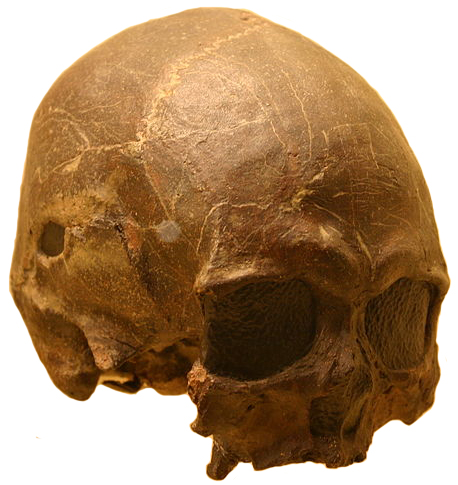
- Black, Glenn A. (1949-04-01). ""Tepexpan Man," A Critique of Method". American Antiquity. 14 (4): 344–346. Can be read here.
The Tepexpan Man is a Pre-Columbian era skeleton, discovered by archaeologist Helmut de Terra in February 1947, on the shores of the former Lake Texcoco in central Mexico. The skeleton was found near mammoth remains and thought to be at least 10,000 years old. It was fancifully hailed by Time magazine as the oldest Mexican Soldier. The skeleton was found lying face down with the arms under the chest and the legs drawn up to the stomach. The body most likely sunk into the mud surrounding it, leaving the shoulder, back, and hips exposed, which might explain why those elements are missing. It is possible that the body was originally deposited in the lake.
For more information, click here. Or, Try these sources:
- Terra, Helmut de (1947-07-01). "Preliminary Note on the Discovery of Fossil Man at Tepexpan in the Valley of Mexico". American Antiquity. 13 (1): 40–44. Can be read here.
- Krieger, Alex D.. 1949. Review of Tepexpan Man. Viking Fund Publications in Anthropology, N° 11. B.B.A.A. Boletín Bibliográfico De Antropología Americana 12 (2). Pan American Institute of Geography and History: 279–85. http://www.jstor.org/stable/40973292.